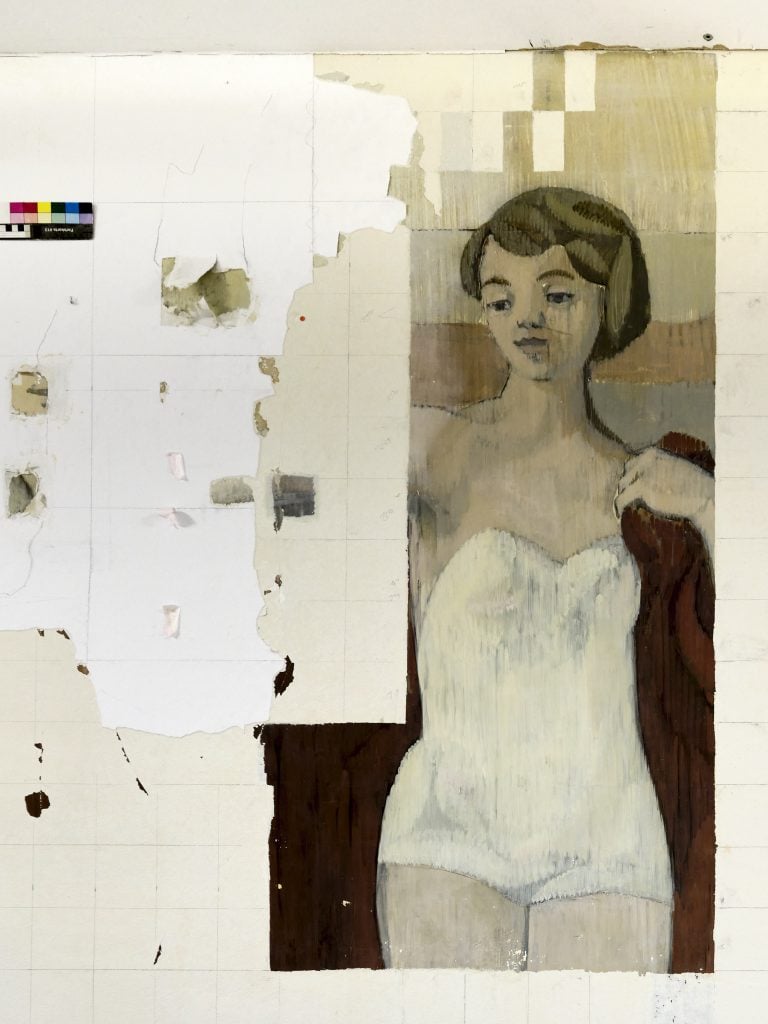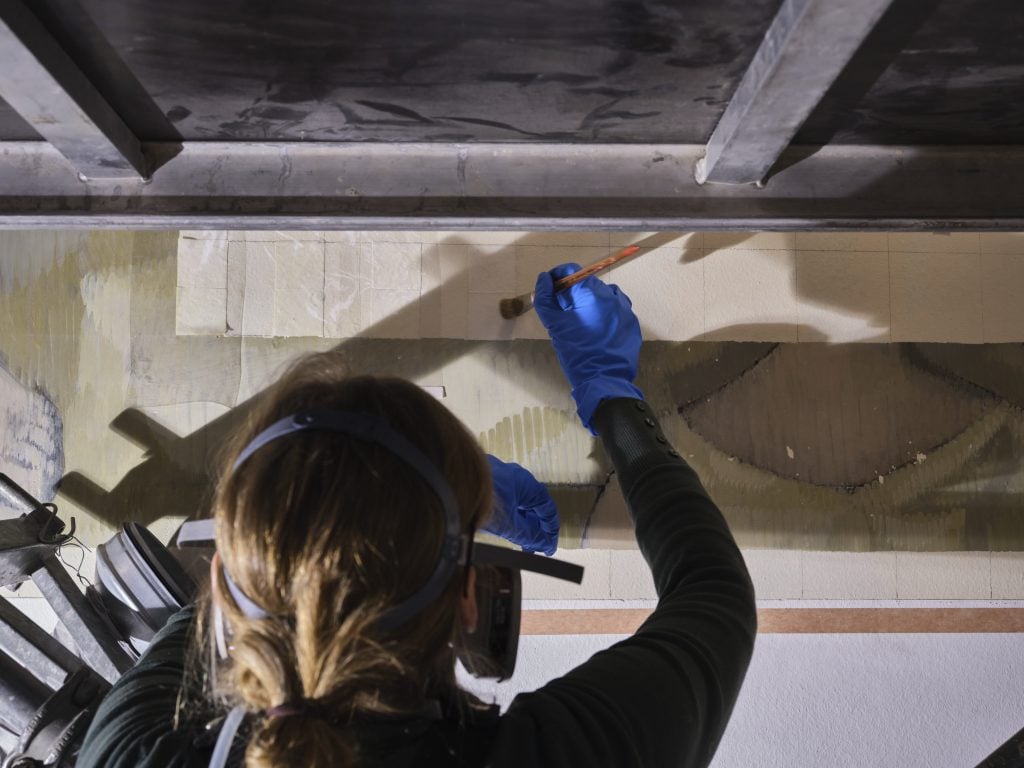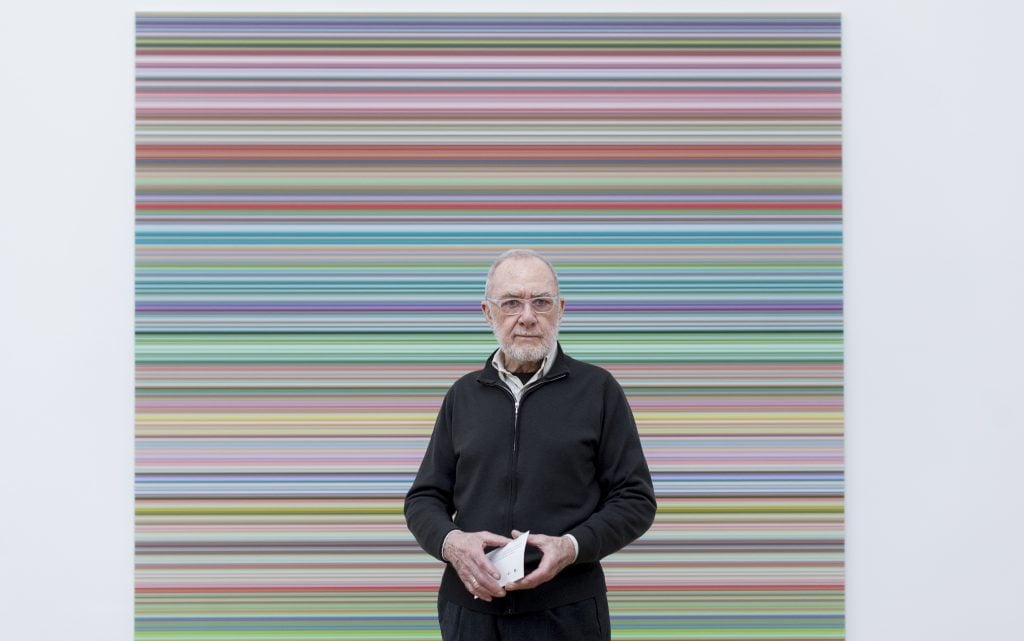Museums & Institutions
Gerhard Richter’s Student Mural Is Recovered in Germany
The mural was painted over in 1979, nearly two decades after Richter fled East Germany.

The mural was painted over in 1979, nearly two decades after Richter fled East Germany.

Adam Schrader

The German Hygiene Museum has begun the process of uncovering a mural painted by Gerhard Richter on a stairway wall in 1956 as his final requirement to graduate from the Dresden Academy of Fine Arts when he was then 24 years old.
The work, titled Lebensfreude (Joy of Life), was painted over in 1979 and forgotten. But it may be one of the most important pieces in the artist’s body of work, helping him secure a three-year doctoral grant and studio space at the university before he ultimately defected from communist East Germany.
Richter, now 92, has since become one of the world’s best-known living artists with a career spanning seven decades under his belt. The museum asked Richter if it could restore the work in 1994 but he did not allow it at the time, stating it wasn’t worth having in the world. He has since had a change of heart.

The German Hygiene Museum has begun the process of uncovering a mural by Gerhard Richter. Photo courtesy of Andreas Rost/Gerhard Richter Archive Dresden
The restoration, which will cost €220,000, ($238,635) was announced at a recent news conference as a joint project between the museum and the Wüstenrot Foundation, in cooperation with the Dresden University of Fine Arts and funding from the Ernst von Siemens Art Foundation, which typically provides money for acquisitions—not restorations. But for Gerhard Richter, the foundation made an exception.
“With the partial uncovering of Gerhard Richter’s mural, a layer of our building’s history becomes visible, of our house becomes visible, giving our audience an important cultural-historical perspective into its history during [East Germany],” museum director Iris Edenheiser said at a news conference.
The museum will uncover the work using chemicals to dissolve the white paint coating it. Visitors will be able to watch the progress of the work over the next few months through a plexiglass window.
“Technically, the partial uncovering poses challenges for the restorers, as there is no protective varnish on the painting’s surface,” the museum said in a statement, meaning damage may accidentally be caused to the paint layer underneath.
The museum said it would reveal the mural in pieces beginning in the fall. The painting depicts groups of people engaged in merriment. The first section of the mural to be uncovered depicts a family in bathing suits on a beach. Further sections of the mural are expected to be released later, depending on the quality of the wall during the restoration efforts.
“Art has to be visible. Otherwise, you can hardly engage with it. That applies also applies to art that was created in [East Germany],” Philip Kurz, managing director of the Wüstenrot Foundation, said in a statement. “Nevertheless, many works of high quality are still quality are still covered up, neglected or simply stored somewhere. The Wüstenrot Foundation has been working for many years to change this.”

Gerhard Richter in front of one of his works in Dresden. Photo by Robert Michael/ullstein bild via Getty Images.
Gerhard Richter, born in Dresden in 1932, was forced to join the Hitler Youth until it was dissolved at the end of World War II—in which two of his uncles were killed in battle and an aunt with schizophrenia was murdered by the Nazis. When the war ended, he worked as an apprentice sign painter until his application to the university was accepted in 1951.
Richter married his first wife, Marianne Eufinger, in 1957—the year after the mural was completed. And from 1957 to 1961, he worked as a master trainee in the academy while taking commissions from the state of East Germany. Together with Eufinger, Richter fled to Germany two months before the construction of the Berlin Wall.